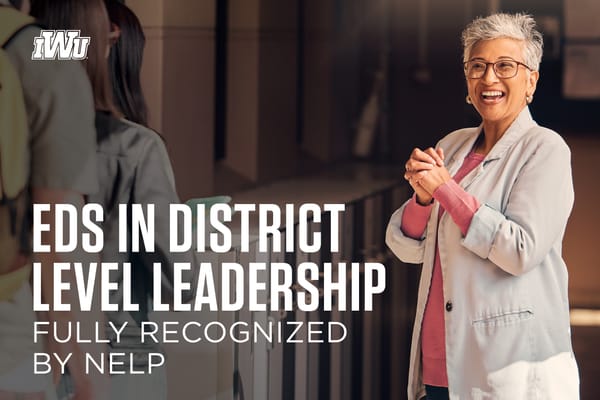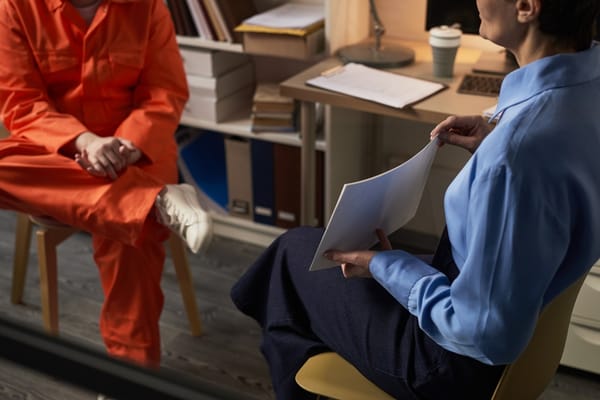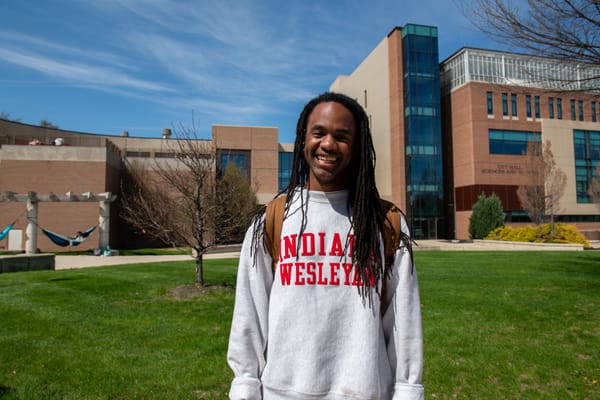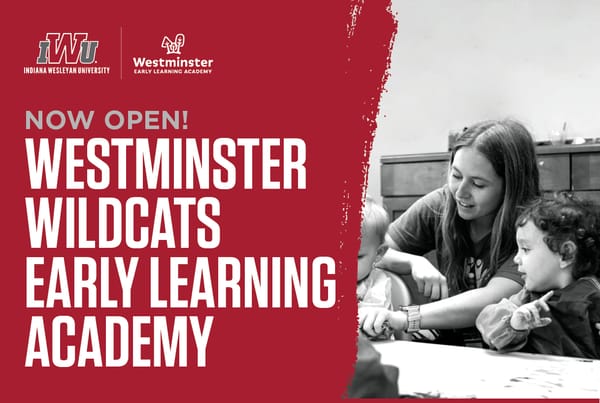Presidents of the Past—William F. McConn (1932-1960)

On To Greater Days
Following a decade of instability, upheaval, controversy, hardship, and tragedy, the title of Marion College’s official third president was perhaps a daunting one for anyone to claim. Nonetheless, one man was willing to—eventually proving to be the exact person the college needed.
William F. McConn grew up in Kansas before meeting and falling in love with Viva Ebling. The pair dated for a period before marrying in 1919. McConn spent several years as the president of Miltonvale College (now Oklahoma Wesleyan), before receiving a phone call from Marion College asking him to take on the role of president. McConn said he would consider the offer and before long he and Viva agreed he should take the position.
When McConn stepped into the presidency, the pain of Henry West’s death was still palpable and outside the confines of Marion College the Great Depression was arriving at its worst point, threatening to destroy the school. Banks everywhere were closing, creating wide-spread confusion and panic on campus about the university’s future. Between the lingering effects of Leedy’s misuse of funds, the Great Depression, and the emotional blow of West’s death, the story of Marion College nearly ended here. Each of these individual issues killed previous colleges in Marion, and all of them together posed a serious threat to Marion College as well. And yet the school persevered. Thanks to the leadership of McConn, the school was able to weather the storms facing it. “In 1932 when I came to Marion College the depression of the 30s was at its worst,” McConn later said. “How we could keep Marion College in operation was something we had to find out and we did not immediately know the answer, but in the Providence of God, Marion was permitted to keep her doors open.”
The following year, as the university finally headed towards a level of stability never seen before, professor and former acting president A. Jones passed away, living just long enough to see the campus through to the end of its darkest days and to the first moments of its brighter future. Before long, McConn managed to endear himself to students and become a well-respected speaker in both civic organizational settings and church settings. In addition to serving as president, McConn was also a professor of public speaking, teaching classes while handling his administrative duties as was standard for the time.
In 1938, College Church was constructed under McConn’s leadership, the president wanting to give Marion College its own church building to emphasize the essential nature of spiritual formation. McConn was also in his sixth year as president at the time, making him the longest serving president in the university’s history. In these six years, the university entered a period of calm, stability, and ease, with no indication McConn would leave any time soon.
Three years later, on December 7th, 1941, Pearl Harbor was bombed, and the United States entered World War II. The week after this, McConn spoke in chapel, the atmosphere on campus heavy with uncertainty. By his tenth year as president, McConn was someone the student body looked up to, placed their full trust in to lead and guide the college, and who had proven himself reliable over many years of dedicated service. This particular day, McConn is not recorded as giving any grand speech about patriotism or any reassuring words regarding the future. Rather, he is said to have prayed with the students, showing great concern, and emphasizing the importance of relying on Christ rather than human ability. McConn was acknowledging the very real danger and enormity of what was going on around them, and rather than try to use his own power to help them feel better, he instead pointed the campus towards God, humbling himself in the process. While encouraging words would eventually come, the fact McConn kept those for later is a powerful statement regarding his mindset as a president.
When McConn did at last speak to the situation, he wrote in The Marion College Journal, saying, “Our country today faces a grave crisis… There are somber days ahead of us; nevertheless this is no time to become panic stricken. This is not the first crisis that the American people have ever faced and in the past we have not failed… In our individual lives we may ask God’s guidance and blessing upon our country as we have been forced into the conflict. We have a right to pray that righteousness and freedom shall triumph. This will be a disturbed Christmas season but let us pray that the message of the Prince of Peace shall even yet grip the hearts of mankind. May the joys of His presence and of a rich holiday season be yours.”
As World War II continued, McConn helped Marion College gain approval as a training school for enlisted reservists so students who either went into military service or were called into it at a reserve level could continue their academic careers without their lives becoming upended any more than was necessary. Over the next few years, however, Marion College men and women went into active service, many pausing their educations to fight in the war. Even so, the school still maintained strong numbers during the entirety of the war, allowing the college to continue in the absence of many of its students.
At the end of the war and the return of those students who left to serve, McConn succeeded in getting Marion College approved under the G. I. Bill of Rights so the students returning wouldn’t need to pay for the remainder of their education, in as many instances as possible. McConn stated, “Our boys have given to their country some of the best years of their lives and Marion College proposes to do everything within her power to afford them an educational opportunity comparable to the one they missed when called into service.”
Indeed, McConn attempted to make Marion College as cheap for students as possible without sacrificing quality or the living wages of faculty, even going so far as to urge students to investigate scholarship opportunities as much as possible in case there were any additional ones they qualified for beyond those he knew about.
On May 10th, 1943, McConn announced the university was free of debt for the first time since before he became president. At long last, the negative impacts of previous financial decisions were in the school’s past, allowing Marion College to continue moving forward. Optimistic about the future, McConn wrote, “An all-wise providence has directed us and is still leading us on to greater days.”
Later the same year, in the fall, McConn announced Marion College would move forward with a building project first planned before the war, but which was put on hold due to it. While the steady increase in students enrolled at Marion College throughout McConn’s presidency was unequivocally positive, it also meant the campus was becoming very overcrowded. As such, this project would not begin until late 1943. Over the next few years this became the first of many projects McConn launched as part of the College Building Campaign, which also included a library and three other buildings. Construction for these projects was paid for in large part by the Federal Works Agency, making it more manageable than otherwise possible once it was clear the construction would exceed expected costs. McConn would also help create a college of arts and sciences as well as a divinity school.
By 1947 most of these construction projects were complete, and so a new goal was set, to apply to the North Central Association. Two years later, McConn helped set up a special citizens advisory committee in Marion made up of “twenty leading citizens who will be scheduled to meet regularly a couple of times a year and before whom Marion College will lay out her program for the future, including not only the building of the proposed men’s dormitory, but our plans for North Central Association membership and our additional plans across a period of years.”
In the twenty years between 1932 and 1951, enrollment moved from 225 to 475 students, the faculty increased from 18 to 25, the number of buildings jumped from 4 to 7, and liabilities decreased from $35,339 to nothing. Many projects were slow moving, but still progressed. The fact McConn held the distinction of giving two decades of his life to Marion College was also unheard of when compared to the university’s previous five official and acting presidents. After the difficulties of the Great Depression and World War II, he and the college were now enjoying several consecutive years of prosperity.
On August 1st, 1953, Viva McConn passed away. The couple were married for thirty-four years, going through multiple job changes together and Viva sticking by William’s side during the twenty-plus years of his presidency thus far—from the Great Depression to World War II and beyond. Despite this, records indicate he continued to work, not faltering in his dedication to the university even as he mourned her loss.
The following October, the North Central Association agreed to inspect Marion College to determine whether to grant accreditation or not, with the inspection scheduled for late fall or winter. The inspection occurred on November 24th, 1954, but no verdict was stated. Three days later, while enroute to Westerville, Ohio for a speaking engagement the following day, McConn’s car was struck by another driver. Both cars were totaled, with McConn’s vehicle overturning and throwing him out upon impact. The president who gave so much for Marion College and saw it through so many struggles, as well as his own personal losses, now found himself lying on an unfamiliar stretch of road with a double compound fracture, a dislocated thigh with a fractured socket, and crushed nerves in his leg. There is no way for us to know McConn’s thoughts at this time. It is probable his injuries and the impact of the crash caused him to lose consciousness, anyway.
For the next several months McConn was in a hospital, recovering from his many injuries. While the other driver was at fault, this fact was of little comfort, no doubt. During this period, the board granted the school’s deans additional power so they could fill the duties of the president together in McConn’s absence. Not long into McConn’s hospital stay, the results of the NCA’s inspection came in. Marion College was denied entrance. This came as an understandable blow to McConn and his entire administration, giving him another issue to think about as he was forced to stay in the hospital, bedridden save for his eventual physical therapy to help him regain the use of his legs. The damage his left leg sustained from the accident was extensive enough McConn would never make a full recovery, although with time he did begin to walk again, doing so in a much slower and more limited manner than before, forced to employ a cane to walk at all.
When McConn returned to Marion College on April 9th, 1955—more than four months after his accident—he slowly fought his way to church the following day in time for the Easter service. While McConn suffered a physical setback, he refused to let it impact him any more than essential, and even then, he seemed to overlook his own well-being in favor of attempting to return his life to as much normalcy as possible. While he was forced to take up his various duties gradually, McConn was undeterred.
Perhaps because of his recent loss of agency, perhaps due to the loss of his wife and an attempt to fill the quiet moments left by her absence, or perhaps just due to his personality, McConn took on more responsibilities than were reasonable, at times—to the detriment of himself and the under-usage of others—which proved a source of frustration in an otherwise rather uncontroversial presidency. At its core, this desire to do as much as possible and take on additional responsibilities came from good intentions, but was a source of friction nonetheless.
During this period, McConn worked harder than ever to get Marion College accredited by the NCA, writing a variety of documents and working to streamline and amplify programs and initiatives across the university. Responding to specific critiques in the review, McConn worked to improve the physical conditions of several buildings worn down from decades of use, as he also worked to integrate the two halves of the university—the theology division and the rest of the programs—which were still somewhat separate despite many years of attempting to create full unity between them.
Meanwhile, wanting to acknowledge and thank President McConn for his many years of dedication and recognizing a need, the student body pooled their money and purchased a new car for the president. It is safe to say he appreciated this gesture a great deal, as he was often seen driving around with it, clearly making good use of their gift.
Throughout the remainder of his time in office, McConn created Marion College’s first student center, helped plan further construction projects such as the new and updated College Church (the previous one becoming the chapel) and continued to be a regular contributor to The Marion College Bulletin (formerly The Marion College Journal). McConn also built a library, a bookstore, a home economics building, a physical education center, a men’s dorm (Williams Hall), and additional space for female students in the form of the Annex.
In 1958, McConn announced his intention to resign, giving a full two years’ notice to students, staff, and faculty. From 1932 to 1960, the college came to fulfill an important role in the field of Christian higher education. During this time the school’s size rose from 175 students to over 400. In his final address to students within The Marion College Bulletin in 1960, McConn wrote, “With the coming of the new president on July 1st, I am sure there are ahead of Marion College years of continuous growth and of more rapid development than anything we have experienced in the past… In fact, when the new president takes over, Marion College for the first time will have an Alumnus at her head and he will need all of the support and cooperation that members of the association can give him. He has proved his ability in a place of responsibility elsewhere and I am sure he will give Marion College his best in the years which lie ahead. May all of us pledge to him the best that we have to offer and under his leadership and the guidance of the Holy Spirit, look forward to the days which lie ahead with great confidence and optimism. Very truly yours, Wm. F. McConn, President.”
After his departure, McConn spent the waning years of his life in rest and retirement, before passing away at the age of eighty on February 3rd, 1969. The importance of his presidency for Marion College is exponential, as McConn helped the school through the almost fatal struggles of the Great Depression, the pain of both Henry West’s death and A. Jones’ later death, and the fear and uncertainty of World War II, helping to improve the school in many drastic ways and also providing the longest-lasting and strongest foundation of any president in the university’s history—something which was essential given the first decade of the university was so lacking in stability. While most students today are unaware of William F. McConn, with no knowledge of the essential role he played in IWU’s history, they are still aware of his name. Thanks to the naming of the McConn Coffee Co. after him, McConn’s name remains a constant on campus—even if its importance is largely forgotten.
Want to read more? Check out the other articles in the "President's of the Past" series!
- Henry C. Bedford (1919-1922)
- John W. Leedy (1922-1927)
- The Forgotten Presidents (1927-1932)
- William F. McConn (1932-1960)
- Woodrow I. Goodman (1960-1976)
- Robert R. Luckey (1976-1984, 1986-1987)
- James P. Hill Jr. (1984-1986)
- James B. Barnes (1987-2006)
- Henry L. Smith (2006-2013)
- David W. Wright (2013-2022)





